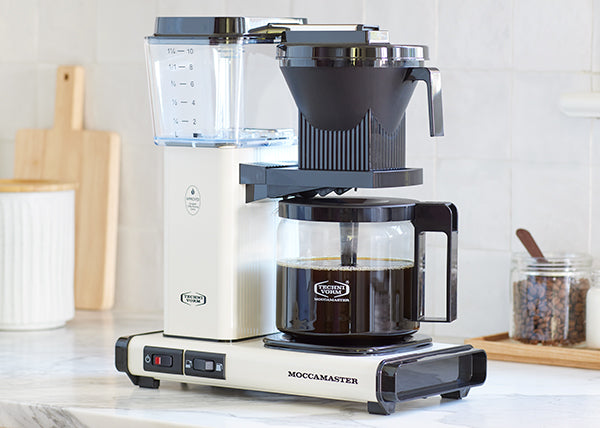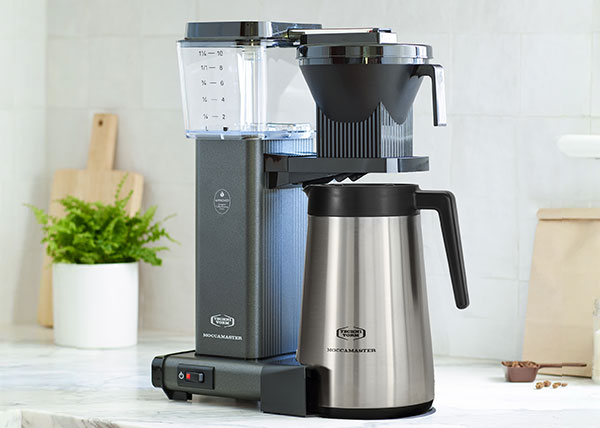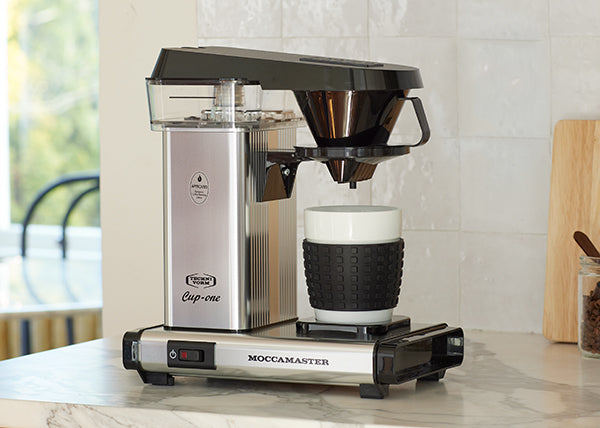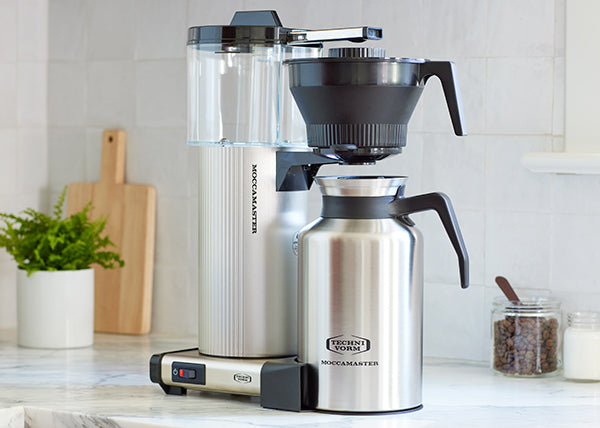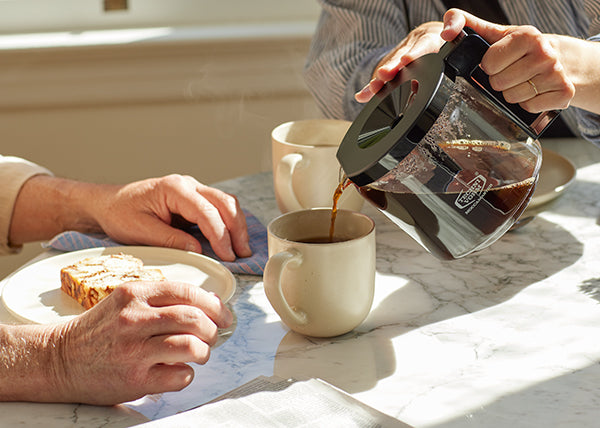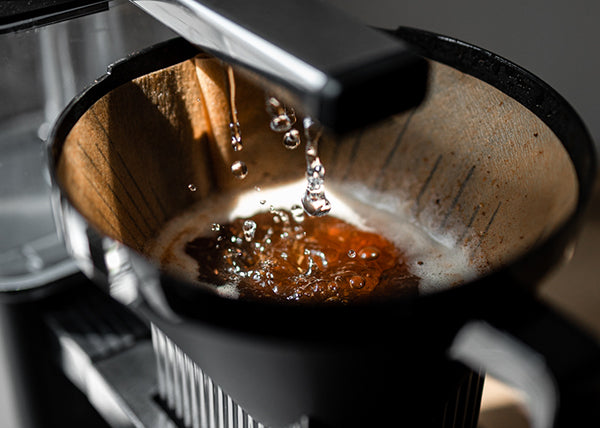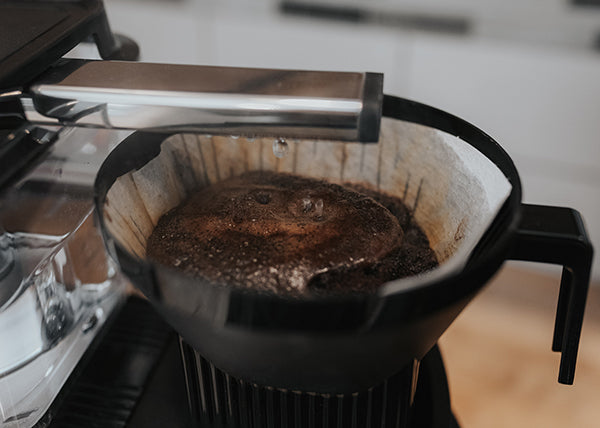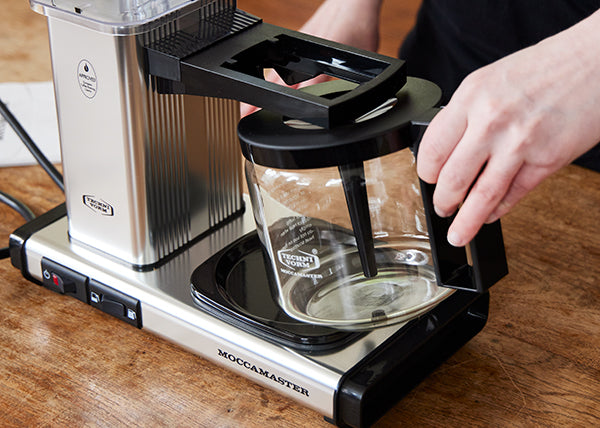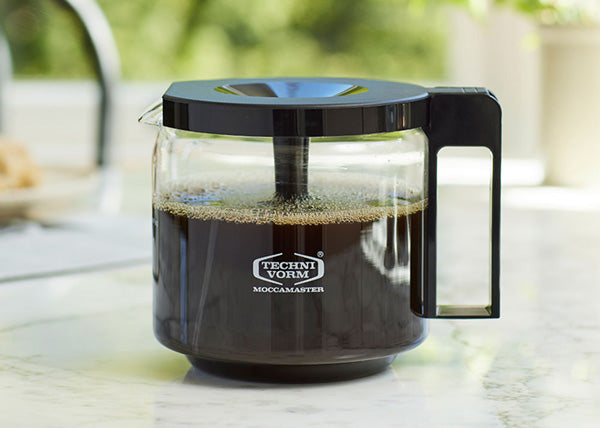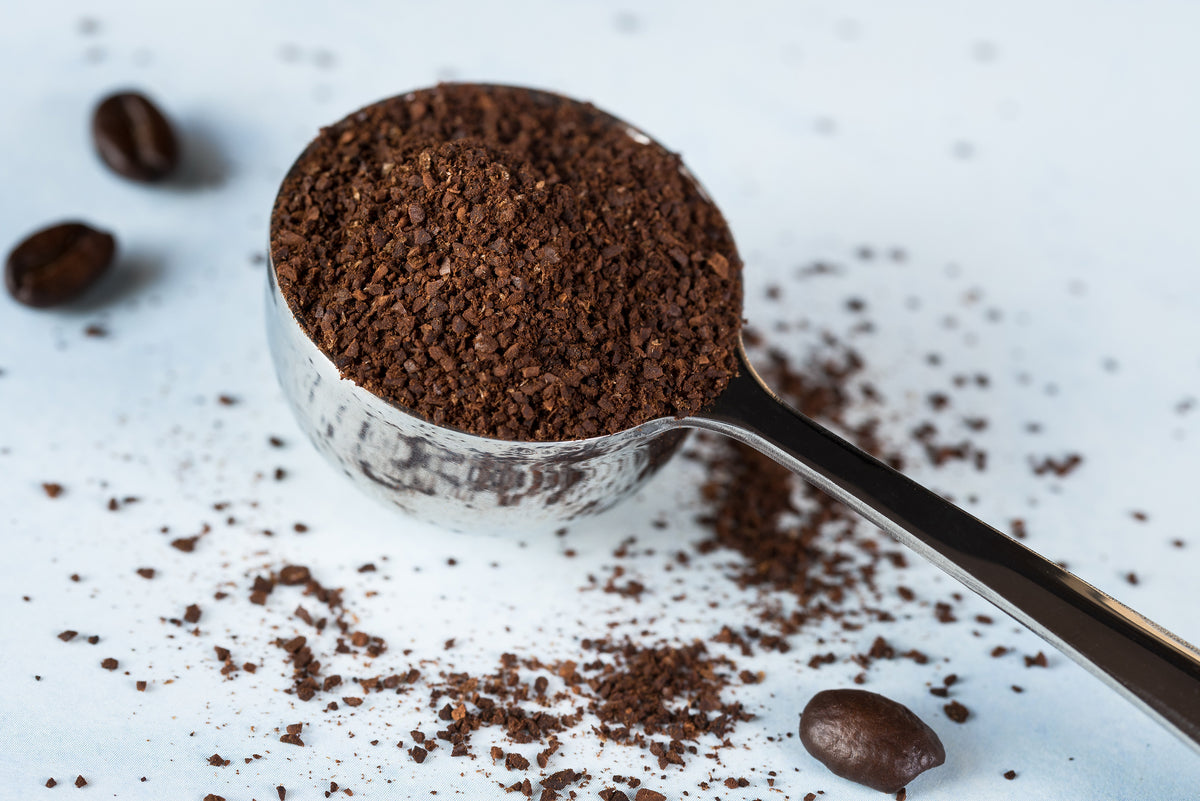If you’re reading an article about grinding your own beans on the Moccamaster site, chances are you have an above-average dedication to achieving consistently perfect coffee. For that, we applaud you, and we hope to enrich your journey with an in-depth look at coffee grind size and how it impacts your brewing experience.
Why Grind Coffee?
Grinding unlocks the enticing flavors and invigorating aromas that are created during the roasting process in a coffee bean’s passage from seed to cup.
- When you grind coffee beans, each whole bean is broken into fragments, increasing the total exposed surface area of each bean.
- The more fragments you create, the more surface area.
- The more surface area, the more contact your beans will have with water during the brewing process.
The contact between the water and the exposed surfaces allows more water-soluble compounds to transfer from the beans (extraction) to give coffee its body and flavor.
What Is Extraction?
Coffee solubles are the compounds in coffee beans that hold the flavor, aroma, and other enticing characteristics that we think of when we think about coffee. When a type of bean is described as producing coffee with a certain body or flavor profile, this description is based on the types of solubles contained within the beans.
- Acids can add an essence of apples, grapes, citrus, and other fruit to your coffee’s flavor.
- Caffeine stimulates your central nervous system and has a slightly bitter taste.
- Carbohydrates and fiber contribute notes of sweetness and earthiness.
- Lipids and fats impact coffee’s viscosity, which is commonly referred to as body or richness.
- Melanoidins are a combination of sugars and amino acids that can affect sweetness.
It’s one thing to choose a coffee with a flavor description that appeals to you, but to brew a cup of coffee that meets all your expectations, you must extract the right amount of solubles. Sounds like a job for a scientist. It’s not! Let’s keep going.
How Does Grind Size Affect Flavor?
Selecting a grind size that’s too fine or too course for your preferred brewing technique can lead to either under-extraction or over-extraction, leaving you with coffee that may taste watery and flavorless or bitter and burnt.
- Larger grind sizes (course or extra coarse) are the size of kosher salt crystals or peppercorns. These have less surface area, so they need to be exposed to water for longer periods of time for proper extraction to occur. Larger grinds are better for methods like a cold brew and French press.
- Smaller grind sizes (fine or extra fine) are similar to flour or powder. These offer significantly more surface area, so less interaction with water is needed. Smaller grinds are used for espresso and Turkish coffee.
To brew a truly exceptional cup of coffee with your Moccamaster, you should select a medium-coarse grind, which has a texture that is comparable to rough sand or sea salt. Our brewers are designed with very specific measures around time, temperature, turbulence, and total dissolved solids, and we have quantifiable evidence that medium-coarse grinds perform best.
Why Should You Grind at Home?
If you’ve read this far, you are undaunted in your pursuit of the perfect cup of coffee. Here are four reasons we think you would enjoy the power of the grinding your own beans:
- Control: Grinding at home gives you complete control, freeing you from the limited grind sizes of most pre-ground coffee. Some stores offer on-site coffee grinders, but we strongly advise against using these machines. You can never be sure what types of beans previously passed through an in-store grinder, nor can you determine when (or how well) the machine was last cleaned.
- Freshness: Once the inside of a coffee bean has been exposed, solubles begin to escape through a process called oxidation. This means that ground beans will continue to lose flavor and aroma until they’re brewed. When you grind your beans at home, you can minimize the time between grinding and brewing, which limits oxidation and maximizes the quality of the coffee in your cup.
- Compatibility: Most pre-ground coffee is on the finer end of the grind size continuum, which may not be the best match for your coffee brewer. When you grind your beans at home, you can make sure you achieve the grind size that will produce a truly exquisite cup of coffee.
- Experimentation: Grinding at home offers an easy way to experiment with multiple grind sizes, without requiring you to purchase a new bag every time you want to try a different size. This is a magnificent opportunity to explore the art of coffee brewing and discover how your grinding decisions can enhance, subdue, or otherwise influence the characteristics of the coffee you are creating.
If you're convinced that grinding your coffee at home is the key to unlocking unparalleled flavor, your next step is to choose the right grinder. With various options available, you may find yourself asking which is right for you – electric vs. manual? Burr grinder vs. blade grinder? We recommend the Moccamaster KM5 Burr Grinder for unrivaled grind consistency.
Once you’ve found the right grinder for you, and the grind size that produces the flavor you most enjoy, you’ll be better prepared to consistently brew coffee that is perfectly delicious – and uniquely yours.


